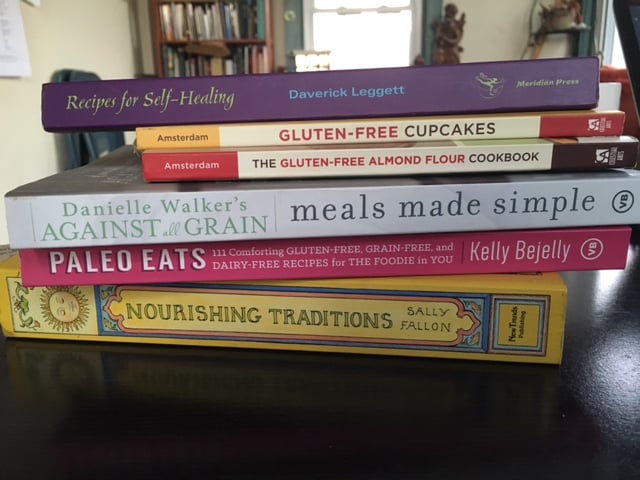November 25, 2019
I hear a lot about “food allergies” but how do I know if I have them? How about this for a short answer, what if you just stopped eating something and you recorded if you felt better? Honestly, that is the gold standard of food sensitivities. Let’s not call them food allergies, because when most people are referring to food allergies what they are really talking about are food sensitivities. Food allergies are the nut allergies and true celiac cases that we hear about in the news all the time. These food allergies can kill you. Food sensitivities will just sabotage your body’s ability to heal by weakening the Immune system, digestive system, hormonal system, and interfere with nutrient absorption. So, let’s look at 3 ways to figure out if you have food sensitivities and the pros and cons of each.
1. Blood Test
Pros: People love to see things in black-and-white on a blood test.
Cons: Blood testing can be expensive, you have to be eating the food that you test for at the time of testing, and in my experience, it does not match with the gold standard of a food elimination diet. It looks like there are a lot of false negatives with this test, which is potentially disastrous to one’s health.
We use Cyrex blood testing to determine what peoples’ food sensitivities are, specifically wheat and it’s associated proteins. That being said, on all the people that I’ve run this test on, who say they do much better cutting out wheat, we often do not see a positive wheat finding on the Cyrex test. That’s why I don’t put blood testing for food sensitivities ahead of what is considered the gold standard, food elimination diets, which we will get to in a second. I believe the most important time to use Cyrex testing is when someone absolutely will not change their diet and need to see in black-and-white what their diet is doing to them.
2. Muscle Testing
Pros: cheap, quick, effective, you can test a lot of things in a short period of time.
Cons: some people do not like muscle testing, and insist on blood testing. You have to be eating the food that you are sensitive to when you are being tested. Sometimes multiple food sensitivities show up. You may not really be sensitive to all these foods, but instead, your digestive system needs support. Plus, you have to have a very experienced muscle tester to do this correctly—there are not many of them around.
Having practiced Nutrition Response Testing and many other muscle testing techniques over the years, muscle testing is my go-to for evaluating food sensitivities. It’s quick, easy, and shows a person immediately what they are sensitive to. Also, I’ve had multiple people ask me to boil down one or two foods that they really need to eliminate, and muscle testing will show this within seconds. It gives people exactly what they want, quickly, and people love it because of this. Like I pointed out before however, some people do not like muscle testing, and therefore, this is not the right technique for them. Food elimination diets will work a lot better, but…..
3. Food Elimination Diet
Pros: This is the gold standard. If someone follows this faithfully for one month, there will be no denying the changes they see. Very cheap, it’s free!
Cons: It takes time. It requires dedication on the part of the patient. Not as black-and-white as muscle testing, or blood testing. It requires work and dedication—many people find this difficult.
Food elimination diets are the gold standard of food sensitivity testing. There are multiple approaches that you can use. We typically use the Paleo reset, the autoimmune Paleo diet (AIP), or the Page Diet. The key to these diets is that you must follow these strictly for at least one month! No cheating! If you are sensitive to a food, you may respond negatively to it for up to three weeks after you ingest it! Therefore, giving any of these diets for at least a month is a must! Almost all my patients who practice one of these diets for a month never go back to the Standard American Diet.
There you go, the 3 ways to figure out if you have food sensitivities. In our office, we commonly put together steps two and three to expedite the process. We don’t do as much blood testing for food sensitivities because of the cost, and I feel they are the least accurate.
For those who would like a personalized approach, or who are dealing with a specific problem that requires a closer look, consider our Nutrition Response Testing or Functional Medicine Programs.
Yours in health,
Dr. Sheehan
Related Articles

Birthday Cake!
Now that I am over 40, birthdays are not as important to me, but birthday cakes are! So yesterday was my birthday, and like many of my birthdays, it was gray and dreary, and also somewhat cold. Although last year the ground was still covered with snow. I had a full...

Natural Pet Health Basics
The importance on natural pet health is dawning on more and more people. If we ourselves get plenty of exercise, eat right, and take the right supplements to feel wonderful and stay healthy, why don't we do the same thing for our pets? The fact of the matter is that...

OH NO! FOOD PREP
The key to getting healthy is feeding yourself right. And the key to feeding yourself right is successful food prep. And what is the key for successful food prep? You might be able to guess. Why, planning ahead, of course! There are many different ways to plan, but in...
Turkey Pot Pie
This turkey pot pie is an interesting concoction I made this morning for breakfast. I have been wanting to get more organ meats into my diet, except that I actively dislike most organ meats. So I saved some beef heart broth (yes, I cooked a beef heart in the crock pot...

What We Learned On Vacation
Dr. Sheehan and I are just returning from our 10 year anniversary vacation celebration and here are a few of the things I have learned: Even if you are eating well, if you eat too much, it's likely you'll gain weight. I avoided sugar and ate lots of organic whole...

Allergy Elimination
What is the cause of allergies? More practitioners should ask this question. Most assume that an allergen causes allergies. But why? Why are some people allergic and not others? The answer to this question lies in how the person's immune system is functioning, and not...
Holistic Help For Weight Loss
As you’re reading this article, about half of the women (and girls!) in America are struggling to lose weight by following diet after diet that just doesn’t work. It’s no wonder that diet and weight loss products are a $40 billion a year industry. But even with all...

The Best Breakfast for Health and Weight Loss
A holistic approach to weight loss As a holistic doctor, one of the most common questions I get from people about diet is “what do I eat for breakfast?” About 4 years ago, I learned from a world famous trainer named Charles Poliquin, that you should basically be...

Protein Shakes Recipes
Banana Split 1 Serving chocolate or vanilla protein powder 8 oz. raw milk, almond or coconut milk, or water ½ ripe banana ½ cup chopped pineapple 4 frozen strawberries 1 tbsp. Essential Balance Oil 3 ice cubes Blend on high for 45 seconds and serve PB & J Shake 1...

Natural Protection from the Sun
Sunburn - a Nutritional Deficiency Issue? Did you know that a sunburn is actually a sign of nutritional imbalance? It means you don't have enough calcium in your tissues. Tissue calcium provides sun protection. And just because you have enough blood or bone calcium...

